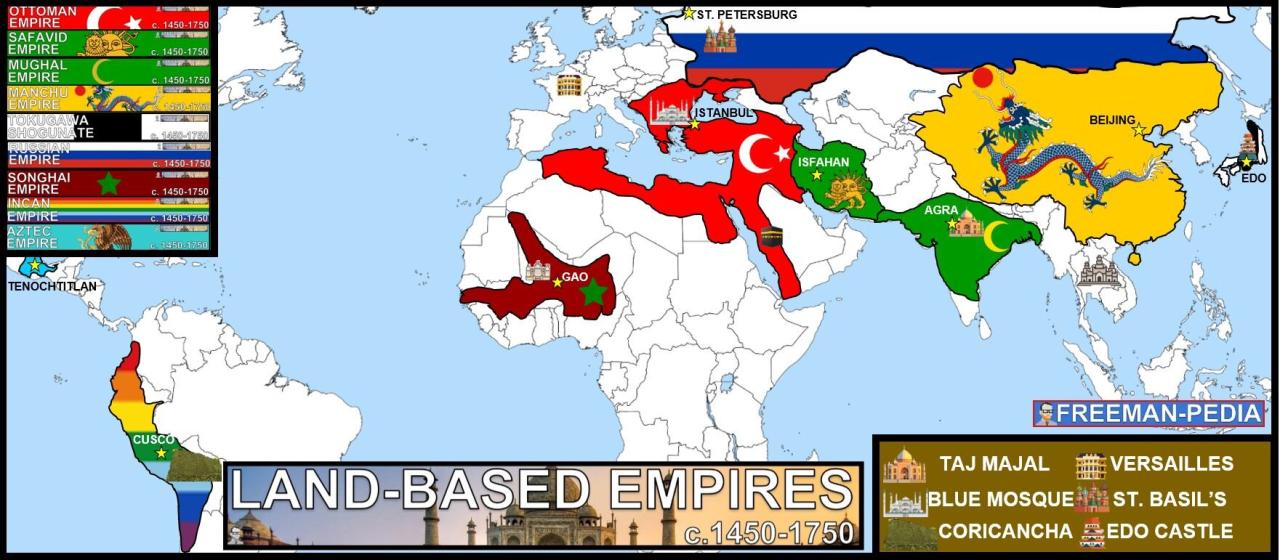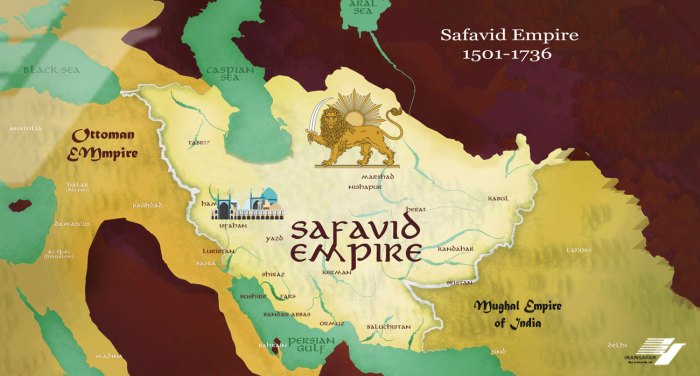Mughal empire ap world history definition – The Mughal Empire, a colossal power that shaped the Indian subcontinent, emerges from the pages of history as a testament to grandeur, cultural brilliance, and the inevitable forces of decline. With its origins in the 16th century, the Mughal Empire left an enduring mark on India’s political, social, and cultural landscape, leaving behind a legacy that continues to captivate historians and scholars to this day.
The empire’s establishment under Babur, a descendant of both Genghis Khan and Timur, marked a turning point in Indian history. His military prowess and strategic alliances laid the foundation for a dynasty that would rule over vast territories for centuries to come.
Mughal Empire: Definition and Origins: Mughal Empire Ap World History Definition

The Mughal Empire, a formidable power that ruled over the Indian subcontinent, emerged as a prominent entity during the 16th and 17th centuries. Its establishment marked a significant turning point in Indian history, as the empire brought about a new era of political, cultural, and economic transformation.
The Mughal Empire’s origins can be traced back to the conquests of Babur, a descendant of Timur and Genghis Khan. In 1526, Babur invaded India and defeated the Delhi Sultanate, establishing the Mughal dynasty. His victory laid the foundation for the empire that would later flourish under his successors.
Major Rulers and their Contributions
The Mughal Empire witnessed the reign of several notable emperors, each contributing significantly to its expansion and legacy. Among them were:
- Akbar (1556-1605):Akbar, widely regarded as one of the greatest Mughal emperors, expanded the empire’s territories through military conquests and introduced administrative reforms. He promoted religious tolerance and patronized the arts, leading to a cultural renaissance during his reign.
- Jahangir (1605-1627):Jahangir continued Akbar’s policies of religious tolerance and cultural patronage. He encouraged trade and established diplomatic relations with European powers.
- Shah Jahan (1628-1658):Shah Jahan is known for his architectural marvels, including the Taj Mahal. He oversaw a period of economic prosperity and commissioned numerous public works projects.
- Aurangzeb (1658-1707):Aurangzeb was the last great Mughal emperor. He expanded the empire to its largest extent but also faced challenges from rebellious factions and external invasions.
Administrative Structure and Governance
The Mughal Empire was characterized by a centralized administrative system that ensured efficient governance over its vast territories. The emperor held absolute power, assisted by a council of ministers.
The empire was divided into provinces, each governed by a governor appointed by the emperor. Provincial governors were responsible for collecting revenue, maintaining law and order, and administering justice.
The Mughal Empire also had a well-developed judiciary system. Judges were appointed by the emperor and were responsible for resolving disputes and enforcing the law.
Cultural Achievements and Legacy, Mughal empire ap world history definition
The Mughal Empire left a lasting legacy in the realm of culture and the arts. Mughal architecture, influenced by Persian and Indian styles, produced iconic monuments such as the Taj Mahal, the Red Fort, and the Fatehpur Sikri complex.
Mughal literature flourished under imperial patronage. Poets like Amir Khusrau and Faizi wrote in both Persian and Hindi, contributing to the development of Urdu literature.
Mughal art, particularly miniature painting, depicted scenes from court life, battles, and religious themes. These paintings showcased the empire’s artistic prowess and provided valuable insights into the social and cultural life of the period.
Economic and Social Impact
The Mughal Empire witnessed significant economic prosperity during its peak. Trade flourished, with the empire controlling major trade routes. The introduction of new crops and agricultural techniques led to increased agricultural productivity.
Mughal society was stratified, with the emperor at the apex. The nobility, military commanders, and wealthy merchants held positions of power and influence. The majority of the population consisted of peasants and artisans.
The Mughal Empire generally tolerated religious diversity, although there were periods of persecution. The majority of the population was Hindu, while Muslims constituted a significant minority.
Decline and Fall of the Empire
The Mughal Empire began to decline in the late 17th century due to several factors. Internal rebellions, external invasions, and economic challenges weakened the empire from within.
The Maratha Confederacy, a Hindu kingdom in central India, emerged as a major threat to Mughal authority. The Marathas launched repeated attacks on Mughal territories, weakening the empire’s military and economic resources.
Invasions by the Persian Empire and the Afghan Durrani Empire further contributed to the empire’s decline. The Mughal Empire eventually collapsed in the mid-18th century, leaving behind a legacy that continues to shape the history and culture of the Indian subcontinent.
Questions and Answers
When was the Mughal Empire established?
The Mughal Empire was established in 1526 by Babur.
Who were some of the most famous Mughal emperors?
Some of the most famous Mughal emperors include Akbar, Jahangir, Shah Jahan, and Aurangzeb.
What were some of the Mughal Empire’s most significant cultural achievements?
Some of the Mughal Empire’s most significant cultural achievements include the Taj Mahal, the Red Fort, and the development of Mughal miniature painting.


